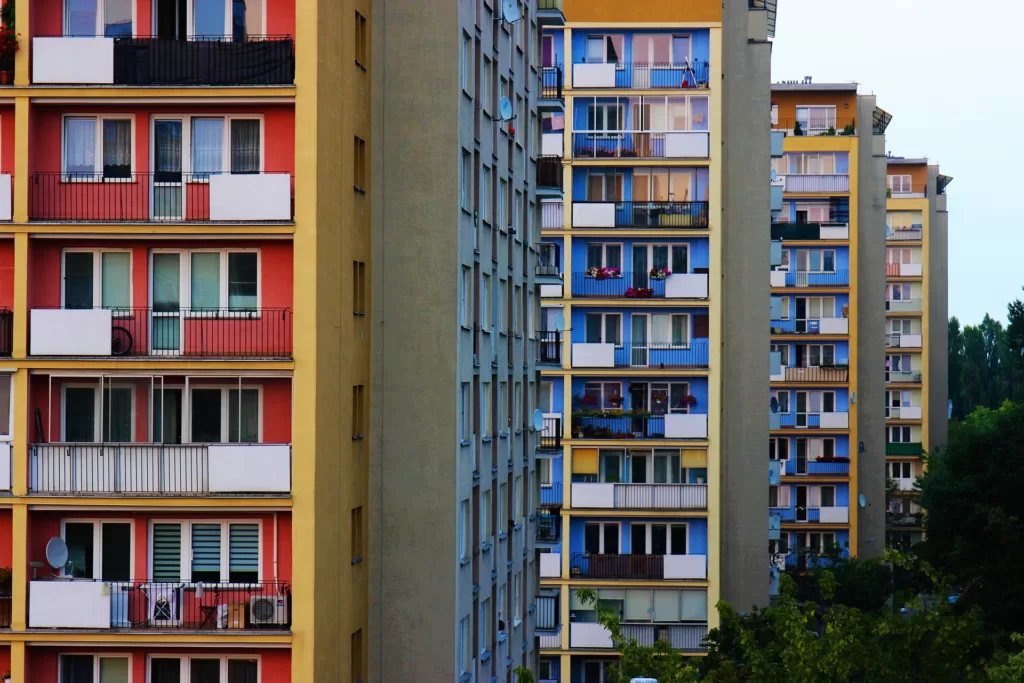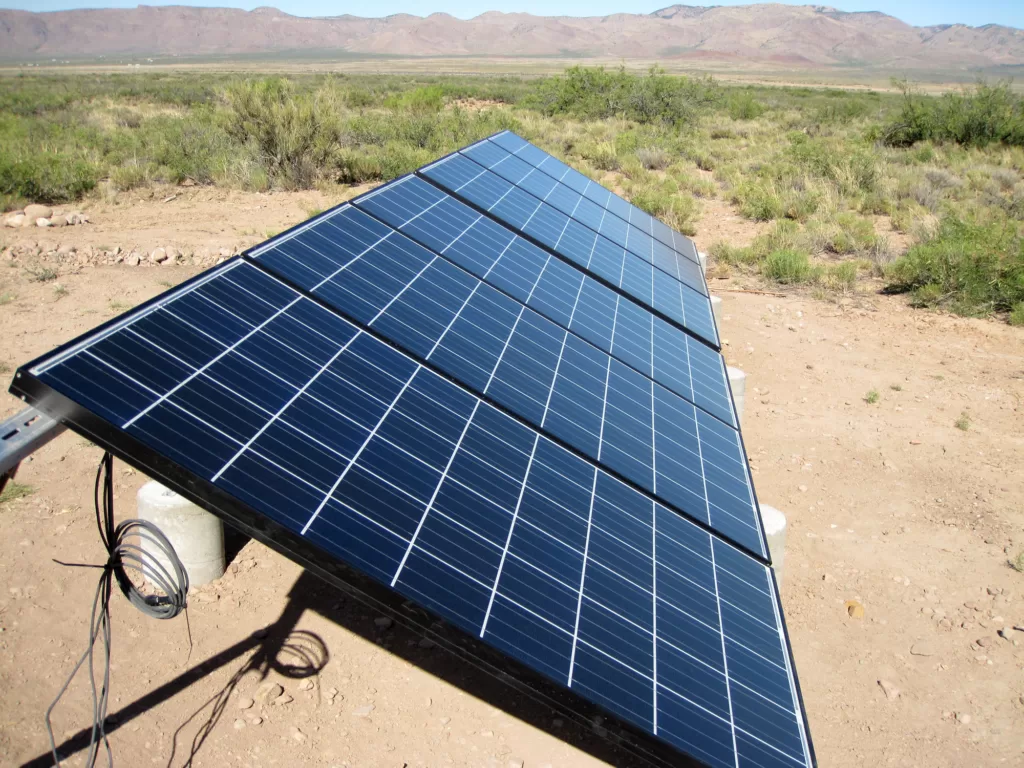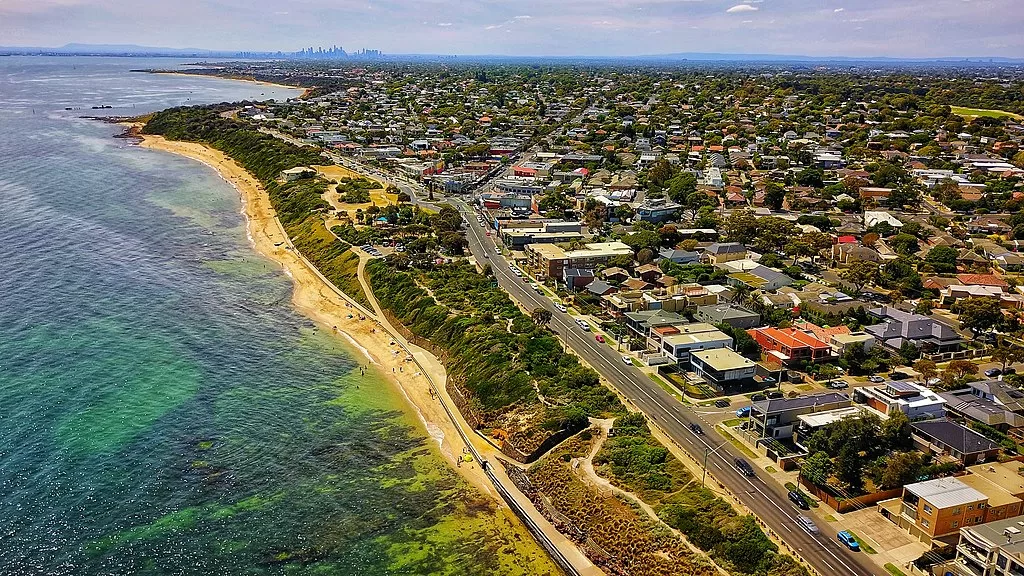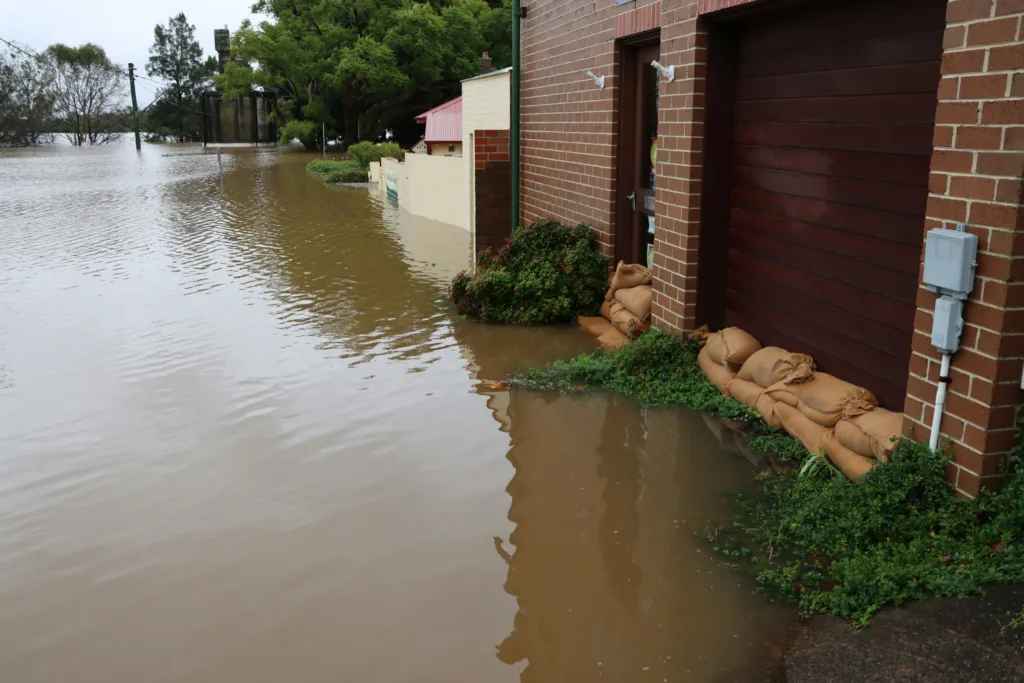Eastern Europe’s ubiquitous prefab housing blocks have potential for mass climate change adaptation.
 Replacing these housing blocks would be hugely expensive and come at a significant environmental cost. : Yarecki via Pixabay Pixabay Licence
Replacing these housing blocks would be hugely expensive and come at a significant environmental cost. : Yarecki via Pixabay Pixabay Licence
Eastern Europe’s ubiquitous prefab housing blocks have potential for mass climate change adaptation.
Across Eastern Europe a significant part of the housing stock consists of drab, prefabricated mass housing built in the 1960s and 70s. While their original grey facades have, since the lifting of the Iron Curtain, been updated with new colours, they’re in the main an unimpressive sight.
But as the planet hurtles towards 2 degrees warming, which means more heatwaves and severe weather, the uniformity of these buildings makes them suitable candidates for mass thermal retrofit programmes.
Their utilitarian design means they have significant potential for climate change adaptation, according to a report by Polish researchers (Mańkowski and Szczechowiak, 2013) cited by the Polish Ministry of Development and Technology’s building energy performance enhancement guide.
Such retrofits can range from installing power, heating and cooling systems based on renewable energy sources, heat exchangers and energy storage, to landscaping the immediate area to enhance water retention and facilitate natural surface temperature regulation by planting trees, shrubs and opting for native, biodiverse plant compositions instead of grass-only lawns.
The housing blocks were built as part of state-wide post-war housing construction projects, to documentation and specifications that have often survived and left little room for improvisation, which means it’s possible to develop energy performance enhancement approaches with potentially much wider applications.
In Poland, they comprise the greatest share of the country’s housing stock, and their energy efficiency on average – even when considering past retrofit projects – leaves ample room for improvement. With the right tools and focus, the governments of countries where such development is common, and which are also mostly developing economies not at the forefront of global green development, could make considerable advances in preparing for the consequences of climate change.
With an increasingly unstable global political situation and fossil fuels having become weapons in the hands of powerful people with malign ambitions, making the built environment less reliant on grid-sourced energy — which in the former Eastern Bloc mostly means coal- or gas-powered power stations — can make the region less vulnerable to energy market disruptions.
This could also help make communities more resilient environmentally and economically.
Targeting prefab housing for thermal retrofitting could also further extend their already longer-than-expected life expectancy.
Initially seen as a temporary measure, these buildings have become a fixture. Replacing them outright would be hugely expensive and come at a significant environmental cost, as the millions of tonnes of reinforced concrete used to build them would have to be recycled and processed. It’s also unknown just how long the service life of the prefab housing can be, making potential investment risky.
There are other potential stumbling blocks. It’s unlikely such a mass replacement can be timely performed given the planning and real estate development models prevalent in Eastern Bloc countries, specifically their reliance on the private sector for housing construction. In Poland for example, the rate at which new flats are being put on the market is also insufficient to make a difference, as the 1978 record (283,600 flats, Statistics Poland, 1978) is yet to be broken.
Recent research has also shown that actually convincing residents and acquiring funding can be major obstacles to mass prefab thermal retrofitting. Most notably, it found that property managers were mostly unwilling to engage in projects that would require the buildings to be temporarily vacated, citing resident opposition, while the range of solutions investigated were found to have a very long payback period, which is a significant drawback. This could likely deter many prospective participants, as many decision-makers can still be said to value monetary gain above environmental costs.
A significant portion of prefab housing residents are baby boomer pensioners, which means younger, housing-starved generations will, in the next decade, be able to move into these flats, either by inheritance or purchase.
While they do have their distinct functional deficiencies, they come with other perks such as being part of larger, spacious districts planned to the principles of the Neighbourhood Unit, offering essential public services that contemporary housing complexes rarely have.
Old prefab housing can offer significant, as-of-yet untapped potential for gaining ground in our struggle to adapt to the consequences of climate change, but it is not without its own specific pitfalls and obstacles. While this can come at a significant financial cost, it is the environmental cost of not tapping into this potential that must be kept in mind.
Dr Krzysztof Barnaś is a Junior Professor at the Chair of Urbanism and City Structure Architecture, Faculty of Architecture, Cracow University of Technology, Poland. He is also a member of the Centre for Scientific Research Improvement of the CUT.
The research was undertaken with financial assistance from the City of Krakow.
Originally published under Creative Commons by 360info™.
Editors Note: In the story “Hot house” sent at: 17/03/2023 09:03.
This is a corrected repeat.














